Tales from Designing Commander (2017 Edition)
I can't believe Commander (2017 Edition) is nearly here!
As the lead designer, I'm thrilled to finally see this project released into the wild. But before that, in this little, curious gap between knowing all the cards and finally getting to play with all the cards, it's a great time for stories about the set and cards themselves.
So today, I'm going to do just that.
I'm going to begin by talking a little about how we arrived at these tribes and then go through a bunch of cards in the set and tell you how they came to be. I'm not going to hit upon every card, but there are definitely more than a few stories to tell.
There's plenty to discuss, so let's hop right into it!
The Tribes
I'm writing this article a month before it's going to go live, but I'm going to take a wild guess and predict that one of the biggest discussion points about this set is: "Why were these tribes chosen? I mean, they're cool—but why these four?"
And that's a great question.
Let's start with the goals.
One of the first things our team did—it may have even been the first thing we did, after I explained what the parameters for the set were—was discuss what our goals would be. I always like to have goals to start with because it helps guide your actions and gives you something to point back to if you ever aren't sure if something is a good choice or not.
Here are the goals for our tribes, taken directly from the handoff document. We wanted to:
- Have at least one established tribe players already know and love;
- Have at least one new tribe that hasn't been strongly supported before and will catch people's attention;
- Have at least one tribe that appeals to extremely casual players;
- Have at least one tribe that appeals to enfranchised players in either uniqueness or play style;
- Have at least one tribe that people who prefer tricky, slower decks will identify as something for them; and
- Have a good color balance between the decks.
You'll note that there are more than four goals there, which was intentional—some decks could fill more than one goal.
One of the very next things we did was brainstorm a ton of different potential tribes that could be interesting for this. We looked at everything even possibly reasonable. Everything from stalwart staples like Elves and Goblins to some offbeat options like Rats or Saprolings. If it's a tribe that we had printed a critical mass of cards for (or at least enough to fill out a Commander deck), we probably talked about it.
I looked through my old notes and emails and found this list from very early in the process. It's not the very first whiteboard, but this list was a combination of our team's favorites and the suggestions from talking to people around the building and asking what they thought would be cool:
- Angel
- Archer
- Bat
- Beast
- Bird
- Cat
- Cleric
- Construct
- Demon
- Dragon
- Dwarf
- Eldrazi
- Elemental
- Elf
- Faerie
- Fish
- Goat
- Goblin
- Golem
- Griffin
- Homarid
- Horror
- Hound
- Human
- Hydra
- Kavu
- Knight
- Kobold
- Lizard
- Merfolk
- Minotaur
- Myr
- Ninja
- Ooze
- Pegasus
- Plant
- Rat
- Rebel
- Rogue
- Saproling
- Scarecrow
- Serpent
- Shapeshifter
- Sliver
- Soldier
- Sphinx
- Spider
- Spirit
- Squirrel
- Thrull
- Vampire
- Weird
- Werewolf
- Wizard
- Zombie
- Zubera
Quite the list, right?
From there, we narrowed the list a little (okay, a lot) further and wanted to collect some data. So we did two things.
First was utilizing one of Magic's most powerful forces: Mark Rosewater.
Mark had been enamored with the new poll function on Twitter and was looking for a way to use it. Mark and I are also both gigantic lovers of tournament brackets. So, at the same time I was early in the process on Commander 2017, Mark and I came up with an idea together: what if we used a bracket to see which types people liked more?
And thus, head-to-head was born.
Head-to-Head: Creature Types - Finals
— Mark Rosewater (@maro254) December 4, 2015
If you aren't familiar, on top of the hundreds of other things he does each week, Mark also runs Magic brackets on Twitter, starting a new one every few weeks. The very first one—and kind of the reason why the whole thing started—was for Commander 2017. It was just so successful that Mark decided to keep rolling with it! (And it's been awesome to follow along. Now we all fill out brackets for each of them in the office.)
So, if you're a fan of head-to-head, well, that was the genesis of it!
The other powerful force I took advantage of is that employees at Wizards just love Magic.
The internal company-wide Commander (2015 Edition) release event was just about to happen, so I made a feedback sheet for everybody there to fill out. These were all dedicated Commander players, so I wanted to poll the crowd and see what they liked. I put the sixteen top tribes from Mark's head-to-head on a sheet, and had people give them all a rating from 1 to 10. Then, compiled the data.
Between all of this, a few things were starting to become clear. Here's how we got to all our choices:
- Dragons!
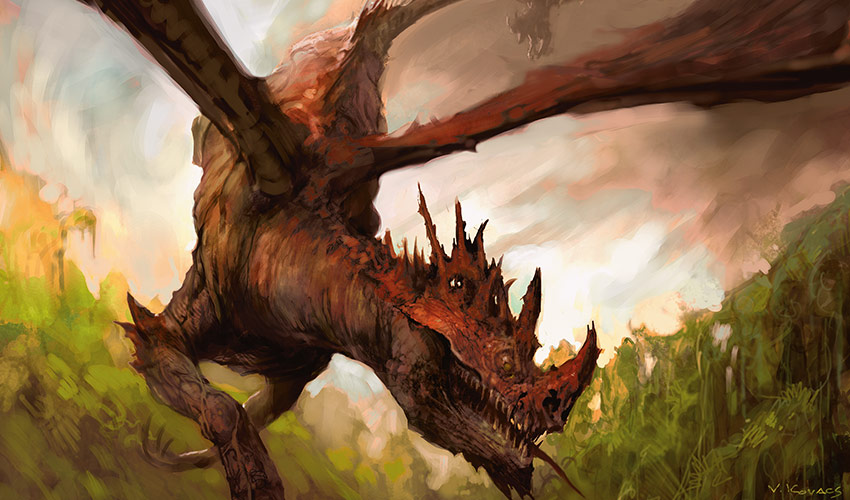
For a long time, I had been told that Dragons won all our studies for most popular and universally loved creature type. And it didn't fail this time around either: Dragons won both Mark's head-to-head and the internal poll.
On top of that, we had been wanting to do a five-color deck. And while Dragons didn't need to be five colors—we did discuss doing black-red-green Dragons, for example, and then doing a different five-color deck—giving you all kinds of awesome Dragons from across the colors of Magic just felt right. Plus, a Dragon deck was going to want mana ramp, which plays right into the five-color nature of it in a way Spirits or Elementals don't necessarily.
So Dragons were a slam dunk, our initial proof-of-concept test builds looked great (largely thanks to the work of Ben Hayes), and we could go from there.
- Vampires!
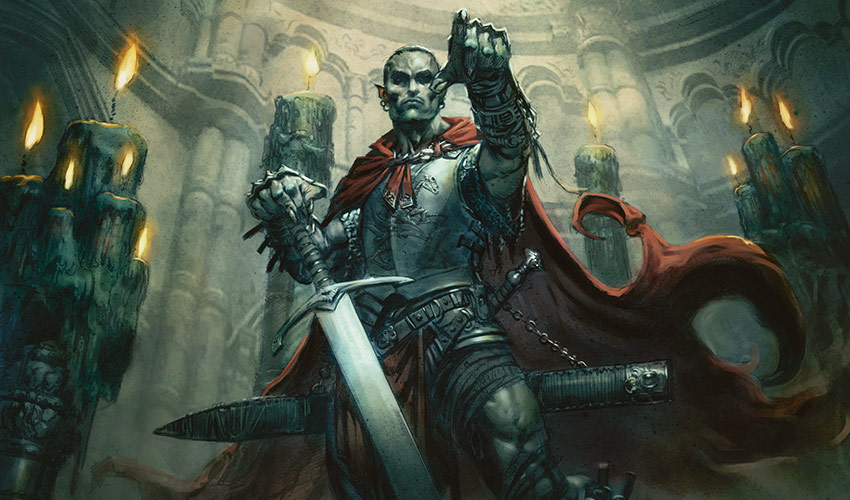
Vampires were something there was a lot of excitement of doing from the start. There were many reasons for this, and so to share just a few:
- Vampires are awesome and one of our most popular tribes
- It meant there was one deck that could play more of an aggressive-to-midrange strategy, coming out quicker and getting the game rolling
- Shadows over Innistrad's black-red Vampires are about to rotate out of Standard, and this gives you an opportunity to do something else with those cards
At the same time, we wanted this Vampires deck to feel a little different than other Vampires decks you could build around the red and black legends from Shadows over Innistrad. Vampires naturally have a good amount of life gain and life loss, and so expanding them into white as well lets you play around with some new takes on a Vampires strategy, which I think will find a home. I was the owner of the Vampire deck within the design team, and I had a blast working on it.
- Wizards!
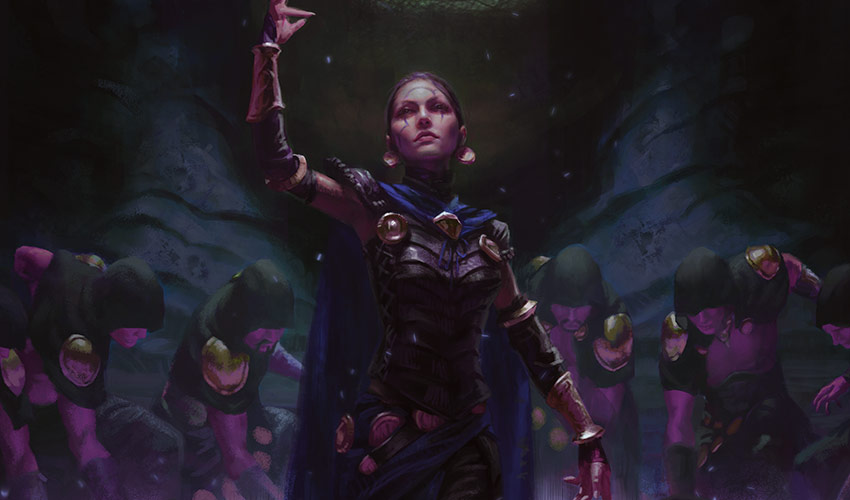
Traditionally, when people talk about their favorite Magic tribes, Wizards wasn't one I heard about that often. When we started gathering data on it, I'll admit, it was pretty middle-of-the-pack in the contenders. I had assumed Merfolk was likely going to be a more popular candidate.
It turns out, there is a lot more love for Wizards than I anticipated!
It did extremely well in both the head-to-head (even taking down Slivers and only narrowly losing to Angels!) and in our internal metrics.
It also really helped solve some of our goals. It gave us a more controlling deck, which gave it a unique feel, and also was a deck that could excite someone who didn't want to play a heavy tribal deck. In the end, Wizards probably feels the least tribal of the four decks (though there's still plenty of tribal, don't get me wrong!) to help make sure it was appealing to someone who just wanted to play their blue control Commander game. Good ol' blue-black-red control!
And as a very tiny thing for me, it also made sure we had at least one "class" among our tribes instead of all creature races.
Jules Robins led the Wizards deck. As you may already know from elsewhere, we handed off the Wizards deck as blue-black, and red was (rightfully) added in development.
- Cats
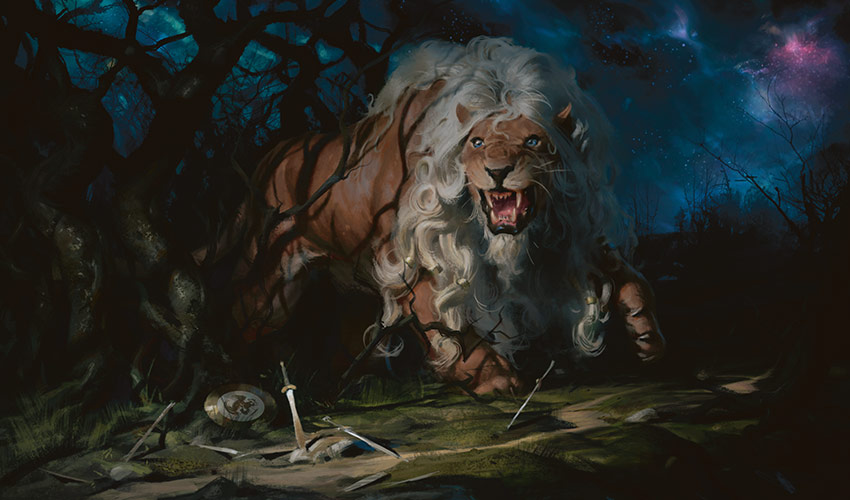
Cats was a long shot.
It was pitched by Mark Gottlieb, and the room was pretty skeptical. Determined to make it work, Mark came back with an early shell of a deck. His clever solution (which shows off his great knack for game design) was finding the intersection of Cats and Equipment.
There was enough there to at least consider. And we did need a green deck that wasn't Dragons. We had been looking at Elves, but green-white Elves already has some reasonable commanders like Selvala, Explorer Returned and Rhys the Redeemed, plus we already did Elves with Freyalise, Llanowar's Fury a couple years back.
So I started asking people about Cats and collecting data.
There's this line about game design from Mark Rosewater that I absolutely love: "If everyone likes your game but no one loves it, it will fail."
It's the idea that you want to find people who really love things about your game rather than just trying to please everybody with something they only like. You'd rather have some people giving your game a 10 out of 10 and some people giving your game a 1 out of 10 rather than having everybody give it a 6 out of 10.
And that's exactly what happened with Cats.
There were a lot of people who I pitched Cats to and they gave me an incredibly confused look or asked me if I was joking.
But, for every one of those, there was a person whose eyes lit up as they brimmed with excitement over playing a Cat deck. Some people fell in love with it.
I remember the moment I decided to myself that Cats was the way to go. Dan Barrett from our European team was in town, and saw the survey I was giving out to people at the Commander 2015 release event.
He found me later on. "Gavin, I don't care what else you do," he began. "But if Cats are not in Commander 2017, I will riot. That is one of the coolest things I have heard about us doing ever."
That's the final cherry on top of everything else I had been seeing. Plus, Cats fit the bill of something players probably wouldn't expect but would be fun to do.
And that's how we ended up with Cats. Mark Gottlieb led the deck through design, and he did a marvelous job at it.
That's how the tribes were chosen, boiled down, and compressed into a few quick paragraphs. (The whole process took many weeks of research, discussion, and building, of course.) It was so, so hard only choosing four tribes, and if I could have, I would have released 100 decks built around different tribes.
We included a ton of cards that are good in tribal decks for whichever tribe you want to build around. And also, if your favorite tribe is not among these four: there's definitely enough design space and beloved tribes here that we could do this again. If you all like this, we'll almost certainly return to this well. Let me know how you enjoy playing with the set!
The Cards
Okay, so you've now heard plenty about how the decks were chosen. But how were the cards made?
Well, it's time for some design stories! From playtest names to how they were made, let's go through a handful of memorable cards.
Bloodline Necromancer
Last week I talked about the origins of having a Cat Dragon in Commander 2017 and how they originated because I was trying to make a cycle of creatures that each had two types. They all seemed to work except for Cat Dragon. (Which actually did work, as it turns out!) The other ones all worked out fine—and a huge help here was because Vampire could both be used as a race ("Vampire Wizard"), but also as a thing that you had become after being vampirized ("Cat Vampire").
That idea didn't end up working out for the uncommon cycle, but Bloodline Necromancer is the one remaining ode left, appearing in two decks and sporting both of their creature types.
Bloodsworn Steward
At one point in design, I asked everybody to think about cycles that we hadn't completed (or that could take additional cards) that could be fun to finish up in Commander. Jules brought up Bastion Protector as a card he wishes there were more of, and, liking that idea, we tried making more.
Originally, the set had four different cards with these commander-enhancing effects, cycling out the previously existing Bastion Protector. We decided to trim it down, but let me know if you like it. Maybe we'll try doing another!
Also, fun fact: originally this was a Dragon and in the Dragon deck. Bryan shifted it over in part to give Vampires another punchy four-drop. Both Vampires and red don't get a lot of four-mana flying 4/4s, and I anticipate seeing plenty of this card on Commander tables for years to come.
Crimson Honor Guard
There is some really interesting Commander-specific design space that you can only touch in Commander sets, and I wanted to start to explore some of those reaches we hadn't sojourned into. This is a card that didn't significantly change outside of a few numbers the whole time.
This card was made as a way to punish the kinds of players who leave their commanders in the command zone for most of the game. Progenitus and Oloro, Ageless Ascetic beware! The Honor Guard is hot on your trail.
Disrupt Decorum
One day, Ben and I passed each other in the hallway. As we were walking past each other he hollered, "Oh, by the way, one thing we should think about is if there's anything in Conspiracy: Take the Crown we want to use in this set."
I nodded.
Upon returning to my desk, I made a few goad cards. I always loved goad in Conspiracy, and I really enjoy how it makes the game move along, but none of them were really at a Commander power level. Well, how about we fix that?
The first version of this was called "Jerk School" and goaded target player. It went through many iterations, and Bryan eventually settled on this version that goaded everybody else.
Be careful who you sit next to as you shuffle up your Commander 2017 decks—you really don't want to be sitting to the left of a person who casts Disrupt Decorum.
Fortunate Few
This card was green-white for a very, very long time. It started off in Cats and this, well catastrophe, was a lot of fun to play with—but it turns out that Cats really wanted to keep a lot of its creatures and go wide. The deck that didn't as much? Dragons. So Bryan wisely moved it in there.
So, why not green-white? One of the later changes to the set was turning this into mono-white because we determined it didn't need to be green. We've found that multicolor can be very limiting for Commander, since each additional color significantly limits what decks you can put that card into. Where possible, if there's a choice between monocolored or multicolored and it's not a legendary creature, we prefer to lean monocolor for Commander decks.
Fractured Identity
. . . But if an effect needs to be multicolored, it stays multicolored. Fractured Identity is one such example. It doesn't really fit squarely anywhere, so it remained white and blue. Mark Gottlieb submitted this card, and the effect and mana cost never changed. It's one of the most enjoyable cards to cast in the set and can lead to all kinds of ridiculous scenarios. Good work, Mark!
Hungry Lynx
Many Cats in Magic are leonin, or Warriors, or gigantic, or any number of things that aren't what actual cats are like. As a cat lover (he has two!), Mark Gottlieb just wanted to make a card that represented a normal housecat. And I'll say, save for maybe some mechanic where the Cat jumps onto your game and scrambles up all the permanents, he nailed it.
Boldwyr Intimidator is one of my favorite cards of all time because it says "Cowards can't block Warriors," and "Cats you control have protection from Rats" is right up there with that for me.
Magus of the Mind
Back in Commander 2015, Magus of the Wheel debuted—and the next four years of Commander designers were suddenly signed up for a Magus supercycle.
Looking for an effect for the blue one, it took a while to find one that we were happy with that also worked all right within the deck. Tinker is ridiculous, but also doesn't fit the Wizard theme at all. Time Walk is just ridiculous in multiplayer. Windfall isn't that exciting. And so eventually, I settled on one of my favorite cards: Mind's Desire!
One thing to keep in mind with this version is that you can activate it any time. Mind's Desire becomes very different when you can do it on your opponent's turn and count all their spells as well! (Though keep in mind you can only play instant-speed cards off the Magus if you go this route.)
Mathas, Fiend Seeker
Kelly Digges was a great partner to work with when figuring out all these legendary creatures. Some were easier than others.
When it came up red-white-black Vampires, it was pretty uncharted territory. We pitched some ideas back and forth. Edgar Markov was a slam dunk, but what about a new character?
Then Kelly said three words: Vampire. Bounty. Hunter.
I was sold and went back to my desk and made this card immediately. The card did leave the set briefly in development, but it came back by the end and never changed otherwise.
May you place your bounties wisely.
Nazahn, Revered Bladesmith
For a very short period of time, we talked about some cards that could start in your command zone that weren't your commander. It didn't really work out, but the best implementation was the idea that got us there in the first place: a Cat that came with its trademark weapon.
So, we did what we often do in R&D: kept the best one of the cycle and ditched the rest. I love the story this tells and how you get to have your commander wielding his named weapon.
New Blood
I played a lot with Captivating Vampire in Standard at one point, and my opponent was taking a really long time on his turn, so my mind wandered. I remember thinking, "Wouldn't it be cool if it also changed all of its creature type allegiances to Vampire, too? I mean, that just makes sense!"
I stored that information away, and then four years later made a Magic card based around that concept. It just goes to show, inspiration for a card can come from anywhere. As an ode to the card that inspired me, the playtest name I gave this card was "Vampirize."
Patron of the Vein
A common misconception at Wizards is that only people on the team working on the set get to make Magic cards. In reality, people from around the building can contribute!
In additional to hole-filling requests for rares that are sent to everyone interested within the company, there are also a few other design-related services. Every Monday, there is a card design workshop where people from around the building, from Game Support to Fraud and everywhere in between, meet up and try and design cards based around a prompt.
In one of these sessions, the prompt was to design cards for C17 tribes. Alli Medwin and Scott Van Essen, who are also in R&D but not tied to Commander design at all, came up with a card called "Vampire Caterer," which I caught wind of and put right into my set. It barely changed throughout the entire process.
Shifting Shadow
Years ago, when I was still relatively new to Wizards, I sent this design, nicknamed "Aether Spasm," to Billy Moreno to fill a hole in Commander (2013 Edition) design. He and the team loved it and played with it for a while, but ultimately had to cut it for other reasons. Billy told me, "Someday, I hope this card gets printed."
Flash forward several years. This time I'm in charge . . . so, naturally I dropped it right into the set. Everybody continued to love it, and the card never changed.
One of the most important skills you can have as a Magic designer at Wizards of the Coast is patience.
Stalking Leonin
Originally, Gottlieb pitched this as an entire mechanic called "vendetta," with the idea to create a full cycle of these "vendetta" creatures. He came up with this creature, we played it, and the mechanic was super fun. It's a wonderful rattlesnake card. So we went to design more. After all, how hard could it be?
Well, as it turns out, pretty hard.
This design space is extremely limited, and there are really only a couple good designs you can do with it. (Especially when you factor in text length of writing the abilities out!) We came up with five but really only liked two, and Bryan's development team kept one of them as a nod back to us. With that said, we did find it very fun, so perhaps we'll see another one some day. Let me know what you think and if you'd like to see more!
Taigam, Ojutai Master and Taigam, Sidisi's Hand
While I was working on Commander 2017, players talking about how they missed not having Taigam in Khans of Tarkir block was still fresh in my head. He seemed like a natural fit with the Dragon deck, so why not do it here?
I spoke to Kelly about it, and he had the suggestion that we do both versions of Taigam. Brilliant!
It's something we can only really do here, in Commander, and it even fit the tribes well to do another. This pair is one of my favorite unique pieces of this set, and I'm incredibly glad we got to brought some old, much-wanted characters back. If there's somebody you want to see again who never received a card, please always tell us—we're listening.
Teferi's Protection
Well, I guess now I'm partially responsible for the return of phasing to Magic.
This card started off as a top-down Vampire trope called "Vanish into Smoke." This is the iconic movie scene where a Vampire turns into smoke and disappears, and you can't affect them at all during that time.
It kept that name for a very long time. And then I caught wind Kelly was going to change it. So I went to go talk to him:
Me: "I hear you're changing the name and concept of Vanish into Smoke?"
Kelly: "Yeah."
Me: "I trust you. So, what's the new awesome concept? I wa—"
Kelly: "It's Teferi phasing out Zhalfir."
Me: "Oh, right. That's why this is your job. I love it!"
Simply amazing. What an awesome flavor fit. And the artwork turned out amazing, too. Just look at that!
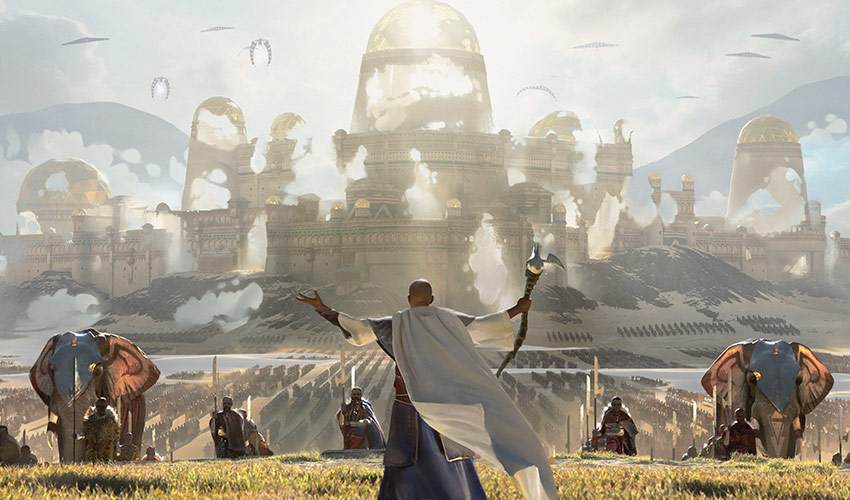
It's a perfect confluence of events that later, in editing, it turned out that phasing was exactly what this Teferi-themed card was looking for.
I love how this card plays and hope you all find fun things to do with it.
Vindictive Lich
We chose four tribes to build around, and we included a number of "generic" tribal cards, like Path of Ancestry, to help you build whatever tribal deck you wanted to. Something else we tried to sneak in a few places were popular creature types attached to cards of other tribes, which would still work in that deck.
Vindictive Lich is one such example. This card can work very well in a Zombie deck, too!
Fresh off Archenemy: Nicol Bolas design, Jules Robins created this card, inspired by some of the schemes in that set where you pick a bad thing for each opponent. It was originally 3 life for aesthetic reasons, but Bryan bumped it up to 5 for even more power! We did discuss having an additional mode that happened to everybody else for larger Commander games, but thought there might be fun in playing politics in that case. (Not to mention text length.) This card is fun to play with, and I hope it dissuades some people from attacking you.
Wasitora, Nekoru Queen
I told the story about this last week, so I'll link back to the article so you can go check it out there. But it is one of my favorite stories from the set, so go and check it out!
Happy New Commander Year!
And there you have it: all kinds of fun history on Commander 2017. And now that you know so much trivia about the set, you can hopefully impress your friends as you bust out your knowledge while playing with the decks.
It has been a long ride to get here, and the set is almost on store shelves. Once you play with it, I would really love to hear what you think on this set, especially as I continue to work on other sets in the future. Your feedback is crucial! Please feel free to type up a tweet, ask me a question on my Tumblr, or send me an e-mail (In English, please) at BeyondBasicsMagic@gmail.com.
Beyond the Basics will return to its regular form next week, so you can catch me then as I cover a new aspect of Magic strategy.
Talk with you again then!

